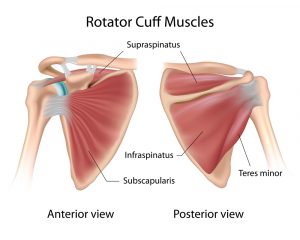[fusion_builder_container hundred_percent=”no” equal_height_columns=”no” menu_anchor=”” hide_on_mobile=”small-visibility,medium-visibility,large-visibility” class=”” id=”” background_color=”” background_image=”” background_position=”center center” background_repeat=”no-repeat” fade=”no” background_parallax=”none” parallax_speed=”0.3″ video_mp4=”” video_webm=”” video_ogv=”” video_url=”” video_aspect_ratio=”16:9″ video_loop=”yes” video_mute=”yes” overlay_color=”” video_preview_image=”” border_size=”” border_color=”” border_style=”solid” padding_top=”” padding_bottom=”” padding_left=”” padding_right=””][fusion_builder_row][fusion_builder_column type=”2_3″ layout=”1_1″ background_position=”left top” background_color=”” border_size=”” border_color=”” border_style=”solid” border_position=”all” spacing=”yes” background_image=”” background_repeat=”no-repeat” padding_top=”” padding_right=”” padding_bottom=”” padding_left=”” margin_top=”0px” margin_bottom=”0px” class=”” id=”” animation_type=”” animation_speed=”0.3″ animation_direction=”left” hide_on_mobile=”small-visibility,medium-visibility,large-visibility” center_content=”no” last=”no” min_height=”” hover_type=”none” link=””][fusion_title hide_on_mobile=”small-visibility,medium-visibility,large-visibility” class=”” id=”” content_align=”left” size=”1″ font_size=”” line_height=”” letter_spacing=”” margin_top=”” margin_bottom=”” margin_top_mobile=”” margin_bottom_mobile=”” text_color=”” style_type=”default” sep_color=””]
March 2019 Newsletter
[/fusion_title][fusion_separator style_type=”default” hide_on_mobile=”small-visibility,medium-visibility,large-visibility” class=”” id=”” sep_color=”” top_margin=”” bottom_margin=”” border_size=”” icon=”” icon_circle=”” icon_circle_color=”” width=”” alignment=”center” /][fusion_text columns=”” column_min_width=”” column_spacing=”” rule_style=”default” rule_size=”” rule_color=”” hide_on_mobile=”small-visibility,medium-visibility,large-visibility” class=”” id=””]
Why Maintain Your Chiropractic Visits Even After The Pain Improves?
Hunter Gatherer Diets: What Do They Look Like & Why Should You Care?
Meet our March Client of the Month Hayley
Catch up with Jeremy, Lauren and Antonio and our newest member; Tina
[/fusion_text][fusion_text columns=”” column_min_width=”” column_spacing=”” rule_style=”default” rule_size=”” rule_color=”” hide_on_mobile=”small-visibility,medium-visibility,large-visibility” class=”” id=””]Please click here to find a PDF version of our March Newsletter[/fusion_text][fusion_text columns=”” column_min_width=”” column_spacing=”” rule_style=”default” rule_size=”” rule_color=”” hide_on_mobile=”small-visibility,medium-visibility,large-visibility” class=”” id=””]
Why Maintain Your Chiropractic Visits Even After The Pain Improves?
It’s quite common for people with lower back pain to turn to a chiropractor after they’ve tried everything else that the doctor has recommended; when the drugs don’t really work.
This is especially the case when we consider that 85 percent of lower back pain cases are a mystery to the medical profession. They are termed “non-specific” because their causes are not really known and don’t relate to any specific pathology.
Such patients are just as likely to stop their chiropractic visits once the initial course of treatment has eased the pain. But what further benefits could a patient expect by continuing to visit their chiropractor for manipulations after the pain has subsided? Can future back pain be prevented and a healthy spine maintained by repeated follow-up visits? A recent study has shed some light on these questions…
Continuing treatment may bring long-term benefit
Maintenance spinal manipulation therapy is undertaken by patients after the initial course of treatments has been concluded. By this stage, the original lower back pain may have subsided and patients are looking to remain pain-free by undergoing regular visits to their chiropractor. While many studies have shown that spinal manipulation is an effective treatment for acute non-specific lower back pain (LBP), its effectiveness over the long-term and in maintenance of the spine has been more challenging to demonstrate. There has been recent interest, therefore, in investigating the longer-term effects of spinal manipulation therapy in patients with chronic non-specific LBP. In particular, an Egyptian study assessed the effectiveness of such therapy in the management of the condition. It set out:
“To determine the effectiveness of maintenance SMT in long-term reduction of pain and disability levels associated with chronic low-back conditions after an initial phase of treatments.”
This randomised trial examined 60 patients with chronic, nonspecific LBP lasting at least six months. The patients were divided into three groups, receiving the following treatments:
- 12 sham treatments of SMT for one month;
- 12 treatments of SMT for one month but no treatments for the subsequent nine months;
- 12 treatments for one month AND maintenance spinal manipulation every two weeks for the following nine months.
The results were as follows:
“Patients in the second and third groups experienced significantly lower pain and disability scores than the first group at the end of the one-month period.” “However, only the third group that was given spinal manipulations during the follow-up period showed more improvement in pain and disability scores at the 10-month evaluation. In the nonmaintained SMT group, however, the mean pain and disability scores returned back near to their pre-treatment level.”
This is interesting – as it suggests that to retain the benefits of the treatment, follow-up manipulations are needed after the initial treatment. The study authors concluded:
“SMT is effective for the treatment of chronic non-specific LBP. To obtain long-term benefit, this study suggests maintenance spinal manipulations after the initial intensive manipulative therapy.”
Maintaining a healthy spine is an ongoing commitment. As this area of study receives more attention, it may convince more people suffering from chronic lower back pain to follow up with their chiropractor in order to maintain a healthy, pain-free spine.
References:
Mohammed K. Senna at al. Does maintained Spinal manipulation therapy for chronic non-specific low back pain result in better long term outcome? Spine publish ahead of print. DOI: 10.1097/BRS.0b013e3181f5dfe0
Hunter Gatherer Diets: What Do They Look Like & Why Should You Care?
The modern diet is often referred to as the ‘SAD’ diet (‘Standard American Diet’). It’s actually what the majority of people living in industrialised nations around the world now follow: a diet rich in processed carbohydrates (especially grains), farmed meat, low- quality processed dairy products, and large amounts of heavily-processed sugar. It could hardly be further removed from what our Stone Age ancestors ate. By examining modern hunter gather diets, it’s possible for anthropologists and nutritionists to work to develop a clearer picture of what our ancestral hunter gatherers consumed. And this plays an important role in shaping the modern paleo diet that people are increasingly seeing as a healthy alternative to the SAD diet. So what did our hunter gatherer ancestors’ diets look like?
The composition of hunter gatherer diets
Until around 10,000 years ago, before the advent of agriculture, hunter gatherers once inhabited virtually all areas of the world. Nowadays, populations of hunter gatherers still inhabit environments as diverse as arctic regions through to equatorial rainforests. Even though it’s increasingly difficult to find a pure untouched, unwesternised lifestyle, it’s still possible, from the data and by using “indirect procedures”, to reconstruct a good approximation of the traditional diet of preagricultural humans. An article published in 2000 in the American Journal of Clinical Nutrition did just that by analysing the composition of a variety of modern hunter gatherer diets from around the world:
“…we incorporate the most recent ethnographic compilation of plant-to-animal economic subsistence patterns of hunter-gatherers to estimate likely dietary macronutrient intakes (% of energy) for environmentally diverse hunter-gatherer populations.”
The analysis showed that:
“…whenever and wherever it was ecologically possible, hunter-gatherers consumed high amounts (45–65% of energy) of animal food.” “Most (73%) of the worldwide hunter-gatherer societies derived >50% (³56–65% of energy) of their subsistence from animal foods, whereas only 14% of these societies derived >50% (³56–65% of energy) of their subsistence from gathered plant foods.” “This high reliance on animal-based foods coupled with the relatively low carbohydrate content of wild plant foods produces universally characteristic macronutrient consumption ratios in which protein is elevated (19–35% of energy) at the expense of carbohydrates (22–40% of energy).”
While the exact composition of the diets is almost impossible to confirm, we can be sure they included large quantities of available fruit and berries, naturally growing vegetables, and unfarmed meat/poultry/fish/eggs/nuts (eaten largely in uncooked form). The high animal-based food content is a little surprising for many people – and they question how so much meat can be part of a healthy diet. But the animals our ancestors would have eaten were very different to the farmed animals that we eat – especially in relation to their body fat content. This, plus the fact that our ancestors were, in general, far more physically active than most people today and therefore needed more energy-laden foods to sustain them, may help to answer the question. Ancestral diets also completely excluded two major food groups (grains and dairy) that have only been part of our diets for the past 10,000 or so years.
Why is this diet superior to the SAD diet?
Many followers of the paleo diet believe that the hunter gatherer diet of our ancestors provides protection from many of the degenerative chronic diseases of our times – sometimes called “diseases of affluence” – like type 2 diabetes, cardiovascular diseases, and cancer. Some people believe that the paleo diet can even help to treat some of these chronic diseases. It’s clear that there are some significant differences between the hunter gatherer diet and the modern-day SAD diet. These differences are primarily in:
- Plant-animal ratios
- Fat/protein intakes
- Carbohydrate and fibre intake
- Salt and sugar intake
- Overall calorie intake
- The way food is cooked
This affects the following dietary factors that impact our health:
- Glycemic load – how much a food raises the blood glucose level
- Fatty acid composition – the balance of unsaturated and saturated fats
- Macronutrient composition – protein, fat and carbohydrate balances
- Micronutrient density – the presence of vitamins, minerals and phytochemicals
- The acid-base balance – the pH value of the body, which is very important to good health
- The sodium-potassium ratio – the balance between the types of salts we consume
- Total dietary fibre content
- Exposure to toxicity
It’s these areas mainly account for the assertion that the hunter gatherer diet is healthier than the SAD diet and is able to protect us from chronic disease. Loren Cordain sums this up:
“Contemporary diets based upon Paleolithic food groups maintained both trace and macronutrient qualities known to reduce the risk of a variety of chronic diseases in western populations.”
In summary, a diet that is high in fibre, micronutrients and antioxidants and low in carbohydrate content, without processed foods, dairy, or cereals, is the biological diet of our ancestors. And it is an excellent blueprint to follow even today.
References:
Cordain L, Miller JB, Eaton SB, Mann N, Holt SH, Speth JD. Plant-animal subsistence ratios and macronutrient energy estimations in worldwide hunter-gatherer diets. Am J Clin Nutr. 2000; 71:682-692. Cordain L. The Nutritional Characteristics of a Contemporary Diet Based Upon Paleolithic Food Groups Department of Health and Exercise Science, Colorado State University, Fort Collins, Colorado 15 JANA Vol. 5, No. 3 (2002)
[/fusion_text][/fusion_builder_column][fusion_builder_column type=”1_3″ layout=”1_3″ spacing=”” center_content=”no” link=”” target=”_self” min_height=”” hide_on_mobile=”small-visibility,medium-visibility,large-visibility” class=”” id=”” background_color=”” background_image=”” background_image_id=”” background_position=”left top” background_repeat=”no-repeat” hover_type=”none” border_size=”0″ border_color=”” border_style=”solid” border_position=”all” border_radius=”” box_shadow=”no” dimension_box_shadow=”” box_shadow_blur=”0″ box_shadow_spread=”0″ box_shadow_color=”” box_shadow_style=”” padding_top=”” padding_right=”” padding_bottom=”” padding_left=”” margin_top=”” margin_bottom=”” animation_type=”” animation_direction=”left” animation_speed=”0.3″ animation_offset=”” last=”no”][fusion_blog layout=”large” blog_grid_columns=”” blog_grid_column_spacing=”” blog_masonry_grid_ratio=”” blog_masonry_width_double=”” equal_heights=”no” number_posts=”6″ offset=”0″ pull_by=”category” cat_slug=”” exclude_cats=”” tag_slug=”” exclude_tags=”” orderby=”date” order=”DESC” thumbnail=”yes” title=”yes” title_link=”yes” content_alignment=”” excerpt=”” excerpt_length=”10″ strip_html=”yes” meta_all=”yes” meta_author=”yes” meta_categories=”yes” meta_comments=”yes” meta_date=”yes” meta_link=”yes” meta_tags=”yes” scrolling=”pagination” grid_box_color=”” grid_element_color=”” grid_separator_style_type=”” grid_separator_color=”” padding_top=”” padding_right=”” padding_bottom=”” padding_left=”” hide_on_mobile=”small-visibility,medium-visibility,large-visibility” class=”” id=”” /][/fusion_builder_column][/fusion_builder_row][/fusion_builder_container]

